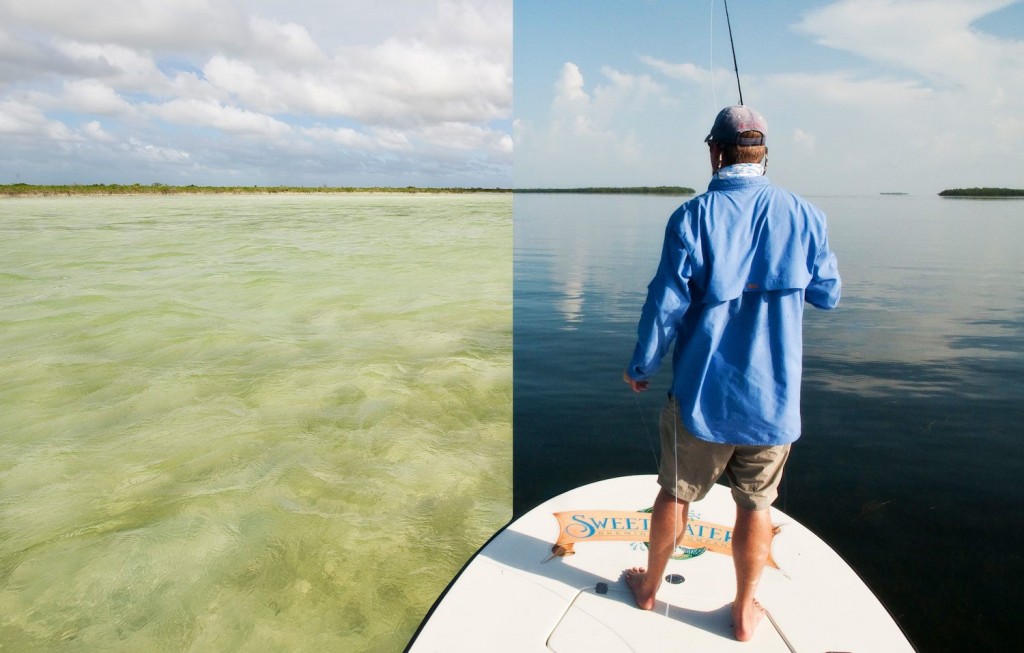Water temperatures and seasons play an important role for fly fishermen fishing the saltwater flats.
Saltwater fish prefer to utilize different types of flats throughout the year to maximize their comfort and food intake. When I was new to the saltwater side of the sport, I never gave it much thought on why my guide was choosing to take me fishing on a light colored sandy flat, versus a grassy or dark bottom flat. It wasn’t my expertise, so I just went along with everything. Quite a few years have past since my rookie fishing days in saltwater. I’ve logged many more trips on the saltwater flats, and I’ve taken the time to pick the brains of the saltwater guides, so I could better understand why they choose one type of flat over the other during the year. Below is a quick recap of information on what I’ve gathered from numerous saltwater guides on this subject.
Fly fishing on saltwater flats is very similar to bass fishing on large reservoirs, in the fact that water temperature is critical in both for consistently locating fish and productive water. Both freshwater and saltwater fish strive to maintain stable underwater enviornments. When water conditions change, so does the habits and behavior of the game fish we’re targeting, as well as, the food sources they prey upon. Fly fisherman that understand this, are quick to match their fishing tactics with the present conditions on the water, because they know it’s critical for staying on top of the fish and in the action.
Light bottomed flats reflect a large portion of the sunlight. When water temperatures are at the extreme end of the comfort zone of saltwater fish, generally during the months of July, August and September, fish will often prefer to frequent light bottomed or sandy coral flats because the water temperatures will be a little cooler. When fly anglers have the option, it can be best to scout and fish these light bottom flats first, over other dark and grassy bottom flats.
On the other hand, when a strong cold front comes through, drastically dropping water temperatures or during the winter months of the year, when water temperatures are consistently colder, saltwater anglers should begin turning their attention more towards scouting and fishing the dark bottomed flats. These dark bottomed, grassy flats, react completely different to sunlight. Instead of reflecting the sunlight, like on sandy flats, the dark bottomed flats absorb the sunlight. This key difference creates a warming effect on the flats instead of a cooling effect, and the fish and their prey find them to be sanctuaries, because their underwater environments are more stable and less effected to changes in the weather.
Now, I didn’t get into water depth, time of day or tidal conditions in this post. All three of these influence the behavior of fish as well. The main point of this post was to quickly define the differences in light bottom flats and dark bottom flats, and instances when fly anglers may want to choose fishing one over the other.
Keep it Reel,
Kent Klewein Gink & Gasoline www.ginkandgasoline.com hookups@ginkandgasoline.com Sign Up For Our Weekly Newsletter!
